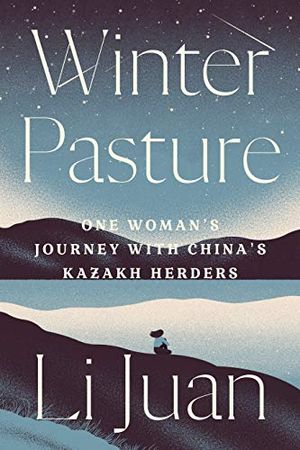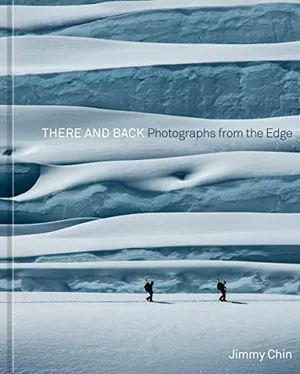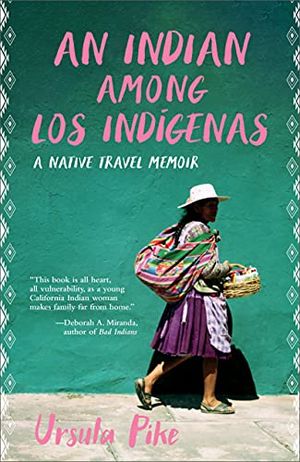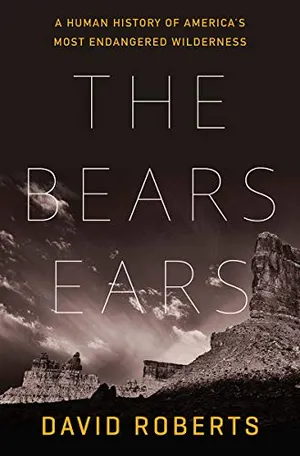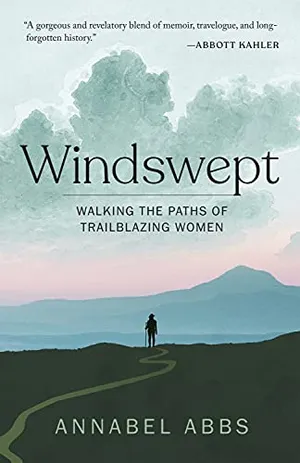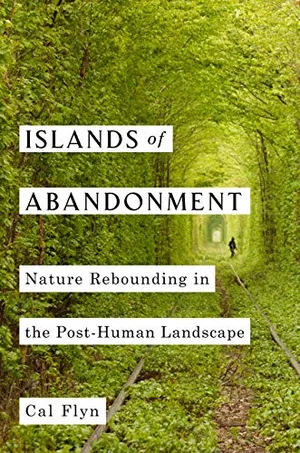The Ten Best Books About Travel of 2021
With many of our wings still clipped by Covid-19 this year, we needed to travel vicariously through these adventurous reads
:focal(700x527:701x528)/https://tf-cmsv2-smithsonianmag-media.s3.amazonaws.com/filer_public/4a/23/4a2324bd-c79e-45cc-8c09-f95cb774416a/inarticle-travel-books2021-1400w.jpg)
To put it mildly, the year 2021 has been an interesting one in terms of travel, thanks to the pandemic. While many countries are reopening their borders and inviting visitors back with open arms, others remain completely locked down to foreigners. Many travelers have seen this as a sign to keep their vacations closer to home, favoring road trips over intercontinental flights and cruises, while others prepare for long-awaited excursions they were forced to cancel due to Covid-19.
Fortunately, one thing that the pandemic hasn’t changed is the ability to escape and experience new places through a book. Here are ten travel book releases from 2021 that are getting us excited about getting out on the open road again.
Winter Pasture: One Woman’s Journey with China’s Kazakh Herders, by Li Juan
After many years of running a convenience store with her mother in China’s Altai Mountains, author Li Juan decided she wanted to experience the country’s rough and rugged landscape for herself and joined a family of Kazakh herders to help them with the challenging task of moving their livestock from one grazing area to another. Faced with minus-20-degree temperatures and a herd of 30 camels, 500 sheep and more than 100 cattle, Li experiences what herding life is like firsthand and chronicles it in her memoir, Winter Pasture, translated to English for the first time. In describing the inspiration for her book, she writes in an excerpt, “At first, my ambitions were grand. I wanted to spend the winter in a destination that was at least 250 miles away, which would mean over a dozen days by horseback, so that I could get a taste of the hardest, most unforgiving aspects of nomadic life.” Li had trepidations about traveling on horseback and withstanding the harsh elements though, eventually opting to spend just three days with the herders. Slate writes, “People can figure out how to survive under the most punishing circumstances, and learning about how these people do it—how they have done it for centuries—makes Winter Pasture an unlikely but inspiring getaway read for the late pandemic.”
Winter Pasture: One Woman's Journey with China's Kazakh Herders
Winner of the People's Literature Award, Winter Pasture has been a bestselling book in China for several years. Li Juan has been widely lauded in the international literary community for her unique contribution to the narrative non-fiction genre. Winter Pasture is her crowning achievement, shattering the boundaries between nature writing and personal memoir.
There and Back: Photographs from the Edge, by Jimmy Chin
Chances are good that you’ve seen Jimmy Chin’s work. Not only have his adventure photographs appeared in National Geographic, but his film Free Solo, which follows professional rock climber Alex Honnold’s gripping attempt to free climb Yosemite National Park’s El Capitan, won an Oscar for best documentary in 2019. Now the photographer-director-mountaineer is adding another hyphenate to his name as book author with the December 7 release of There and Back: Photographs from the Edge. Capturing some of Chin’s greatest (and most death-defying) adventures, from skiing Mount Everest to crisscrossing Tibet’s high-altitude Chang Tang region without a support crew, the book contains more than 200 striking photographs shot on all seven continents. Chin’s imagery is coupled with profiles of some of the world’s most exceptional athletes and adventurers, including Honnold and ski-mountaineer Kit DesLauriers. Fellow photographer Paul Nicklen has this to say about Chin’s work: “Jimmy’s photography takes you on a journey to places few have ever visited. No one else is capable of capturing such beauty while hanging by a thread from a towering rock face or skiing down the legendary slopes of Mount Everest. It is a pleasure to finally have all his most iconic images in one volume. I can't wait for you to get lost in the poetry he has unearthed at the most extreme corners of our planet.”
There and Back: Photographs from the Edge
The Academy Award–winning director of Free Solo and National Geographic photographer presents the first collection of his iconic adventure photography, featuring some of the greatest moments of the most accomplished climbers and outdoor athletes in the world, and including more than 200 extraordinary photographs.
An Indian Among Los Indígenas: A Native Travel Memoir, by Ursula Pike
A member of the Karuk Tribe from Northern California, Ursula Pike joined the Peace Corps in her mid-20s in hopes of building relationships with indigenous groups far from home. As she writes in her debut book, An Indian Among Los Indígenas, it wasn't lost on her, though, that when she arrived in La Paz, Bolivia, to start her volunteer term, she “followed in the footsteps of Western colonizers and missionaries who had also claimed they were there to help.” Pike's travel memoir grapples with the lasting repercussions she witnesses of colonization across South America, providing an honest, straightforward and non-white-washed perspective. “Acutely aware of the legacy of colonialism on her own people, Pike examines her own potential complicity with frankness and wit,” writes Ms. Magazine.
An Indian Among los Indígenas: A Native Travel Memoir
An Indian among los Indígenas upends a canon of travel memoirs that has historically been dominated by white writers. It is a sharp, honest, and unnerving examination of the shadows that colonial history casts over even the most well-intentioned attempts at cross-cultural aid.
The Bears Ears: A Human History of America’s Most Endangered Wilderness, by David Roberts
Bears Ears National Monument in southeastern Utah has been a hotly contested region over the last few years. In December 2017, former president Donald Trump signed legislation that decreased the monument’s size by 85 percent in an effort to put the land on the auction block for future development as a drilling and mining site—one of the largest reductions of protected land by a president in history—only for the Biden administration to restore the territory to its original form this October. Now that the environmental battle has ended, author David Roberts takes readers on a trek through this rugged 1.35-million-acre expanse, which he calls “his favorite place on earth.” In The Bears Ears, Roberts combines archival research with his own personal adventures exploring some of the monument’s more than 100,000 archeological sites, which comprise nearly 14,000 years’ worth of human history. “Most tribes feel that North America is still theirs, that it’s been stolen from them by the government, by white people,” Mark Maryboy, a retired Navajo politician and activist, told Roberts for an opinion piece he wrote for The New York Times in February. “We still worship in those lands. The Bears Ears is our church, our cathedral.”
The Bears Ears: A Human History of America's Most Endangered Wilderness
A personal and historical exploration of the Bears Ears country and the fight to save a national monument.
Windswept: Walking the Paths of Trailblazing Women, by Annabel Abbs
In her new book, English author Annabel Abbs adds weight to the famous quote, “Well behaved women rarely make history”—originally uttered by Harvard professor Laurel Thatcher Ulrich and often misattributed to Eleanor Roosevelt. Following along the paths of notable artists, authors, musicians and scholars, she embarks on an inspirational journey with the many women throughout history who refused to conform to gender norms and instead left behind their conventional homemaking roles to enter spheres historically populated by men. Abbs, who describes her own childhood experiences of growing up carless and relying on her own two feet to get around, “walks” alongside artist Georgia O'Keeffe in the secluded desert of New Mexico, English author Daphne Du Maurier and the River Rhone, and French writer and philosopher Simone de Beauvoir amidst the wild forests and mountains of France. Throughout Windswept, Abbs poses this simple yet thought-provoking question: “How does a woman change once she becomes windswept?”
Windswept: Walking the Paths of Trailblazing Women
Annabel Abbs follows in the footsteps of women who boldly reclaimed wild landscapes for themselves, including Georgia O’Keeffe in the empty plains of Texas and New Mexico, Nan Shepherd in the mountains of Scotland, Gwen John following the French River Garonne, Daphne du Maurier along the River Rhône, and Simone de Beauvoir―who walked as much as twenty-five miles a day in a dress and espadrilles―through the mountains and forests of France.
Postcards from the Baja California Border: Portraying Townscape and Place, 1900s-1950s, by Daniel D. Arreola
For many people, including Daniel D. Arreola, popping a postcard in the mail to friends and loved ones back home is a necessary part of traveling. In Postcards from the Baja California Border, the cultural and historical geographer looks at the history of some of the Mexican border’s many communities, particularly Tijuana, Mexicali, Tecate and Algodones, training his focus specifically on the first half of the 20th century. The book is the final installment of a four-part series that includes postcards from the Río Bravo, Sonora and Chihuahua. “In each of these excursions the goal has been the same: to understand how a popular media form, the postcard, is a window into the historical and geographical past of Mexican border communities that were tourist destinations from the 1900s through the 1950s,” Arreola writes in the book’s introduction. Many of the postcards are from Arreola’s personal collection while others are from archives. By spotlighting dozens of colorful postcards, Arreola shows what the borderlands look like from the perspective of visitors and provides a time capsule of the many cabarets, curios shops and other popular tourist haunts that have all but disappeared over time.
Postcards from the Baja California Border: Portraying Townscape and Place, 1900s–1950s
Postcards have a magical pull. They allow us to see the past through charming relics that allow us to travel back in time. Daniel D. Arreola’s Postcards from the Baja California Border offers a window into the historical and geographical past of storied Mexican border communities.
Come Fly the World: The Jet-Age Story of the Women of Pan Am, by Julia Cooke
Pan American World Airways, or simply Pan Am, is arguably one of the most recognizable and iconic international carriers in the world, leaving an impressionable mark on the airline industry long after it filed for bankruptcy in 1991. In her tell-all book Come Fly the World, author Julia Cooke brings the allure of traveling by air back to life, sharing the experiences of flight attendants (then called stewardesses) who worked for the airline between 1966 and 1975. Not only does Cooke highlight some of the ridiculous standards put forth by the airline for its employees, like requiring flight attendants to be between 5′3" and 5′9", 105 and 140 pounds, and under 26 years of age, but also their role during the Vietnam War, including providing assistance during Operation Babylift, which saw the mass evacuation of some 2,000 orphaned children in April 1975, during the fall of Saigon, who were later adopted by new parents throughout America. In a review of the book, author Kate Bolick (Spinster: Making a Life of One’s Own) writes, “Viewing the untold story of jet-age stewardesses through a modern feminist lens, Cooke brings vividly to life a contradictory profession, one that, for all its limitations, offered many women a chance for true liberation.”
Come Fly The World: The Jet-Age Story of the Women of Pan Am
Glamour, danger, liberation: in a Mad Men–era of commercial flight, Pan Am World Airways attracted the kind of young woman who wanted out, and wanted up.
Around the World in 80 Books, by David Damrosch
As a professor of literature at Harvard University, David Damrosch knows a thing or two about books that have shaped the field of literature and also touched people’s lives. For Around the World in 80 Books, he pulls from his comprehensive knowledge of the written word and his personal library of texts to create an analysis of 80 books that offer readers a strong sense of place. From Charles Dickens (Great Expectations) and Eileen Chang (Love in a Fallen City) to Chinua Achebe (Things Fall Apart) and Marcel Proust (In Search of Lost Time), Damrosch draws together a diverse array of talented authors from all walks of life. They are both widely and lesser known, but all have one key thing in common: Their writing has the ability to transport readers to places near and far without ever needing to leave home.
Around the World in 80 Books
A transporting and illuminating voyage around the globe, through classic and modern literary works that are in conversation with one another and with the world around them.
Islands of Abandonment, by Cal Flyn
During the early pandemic and subsequent lockdown, it became strikingly apparent how quickly nature takes over once human interference subsides. Air quality improved in cities around the world, and birds flocked to urban areas they normally would avoid. In Islands of Abandonment, investigative journalist and nature writer Cal Flyn takes things one step further by visiting places around the world abandoned by humans over time, whether it be due to war or famine, including the Korean Demilitarized Zone (DMZ) that serves as a buffer between North and South Korea, and Chernobyl, the site of a deadly nuclear disaster that remains risky to human health nearly 40 years later. The book, which was a finalist for the Wainwright Prize, awarded to works that “include a celebration of nature and our natural environment or a warning of the dangers to it across the globe,” acknowledges the negative impacts humans have had on Earth, while making a strong case for humans’ collective ability to help rehabilitate the planet for future generations.
Islands of Abandonment: Nature Rebounding in the Post-Human Landscape
A beautiful, lyrical exploration of the places where nature is flourishing in our absence
Freedom, by Sebastian Junger
Over the course of a year, Sebastian Junger, the New York Times bestselling author of Tribe, and three of his friends—a conflict photographer and two military veterans—challenged themselves to leave behind the creature comforts they were used to for the everyday struggles that come with life on the road. Using the railroad lines coursing up and down the East Coast as their guide, they set out on a mission to experience what life is like without the safety net provided by conventional food and shelter. They spent their weeks living in the elements, sleeping under overpasses, escaping railroad police and scrambling to cobble together each day’s meals. Freedom places the group’s experiment in independence into context with historical accounts of labor strikes, resistance movements and life on the open frontier, ultimately shedding new light on the meaning of community and freedom. “Junger contemplates the intersection of autonomy and coterie at a time when the word itself, while holding so much meaning, is so often misunderstood,” writes Sarah Sicard in a review for the Military Times.
Freedom
Throughout history, humans have been driven by the quest for two cherished ideals: community and freedom. The two don’t coexist easily. We value individuality and self-reliance, yet are utterly dependent on community for our most basic needs. In this intricately crafted and thought-provoking book, Sebastian Junger examines the tension that lies at the heart of what it means to be human.
Planning Your Next Trip?
Explore great travel deals
Smithsonian magazine participates in affiliate link advertising programs. If you purchase an item through these links, we receive a commission.
A Note to our Readers
Smithsonian magazine participates in affiliate link advertising programs. If you purchase an item through these links, we receive a commission.
